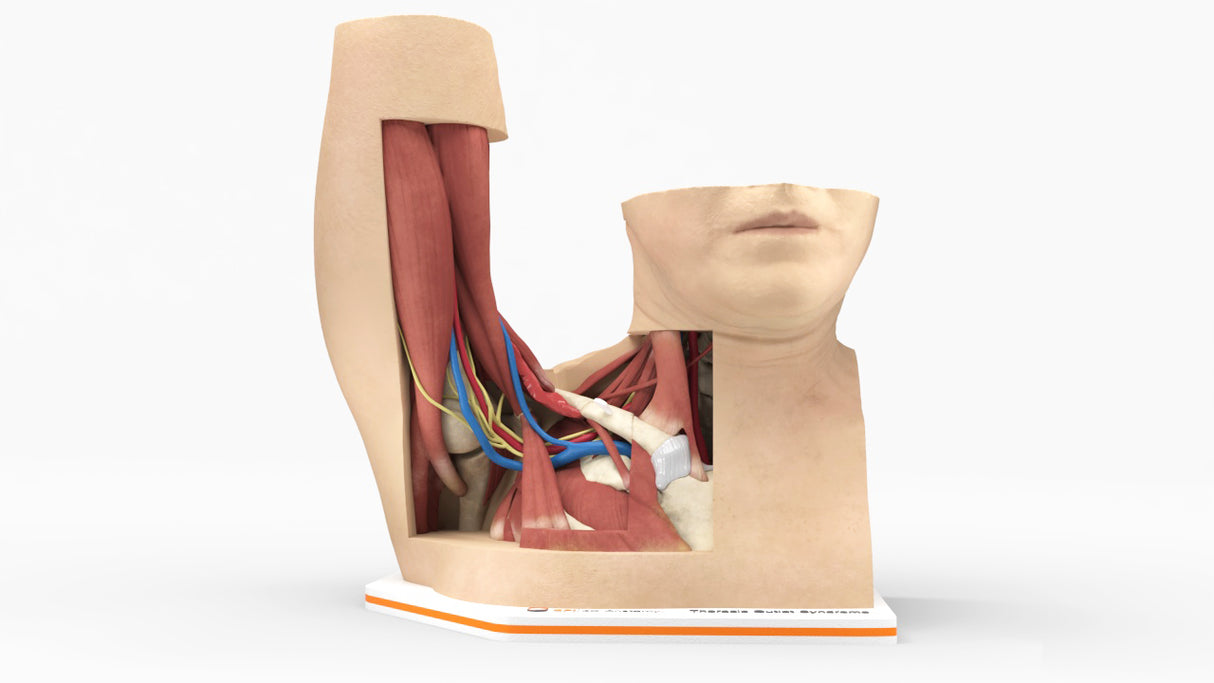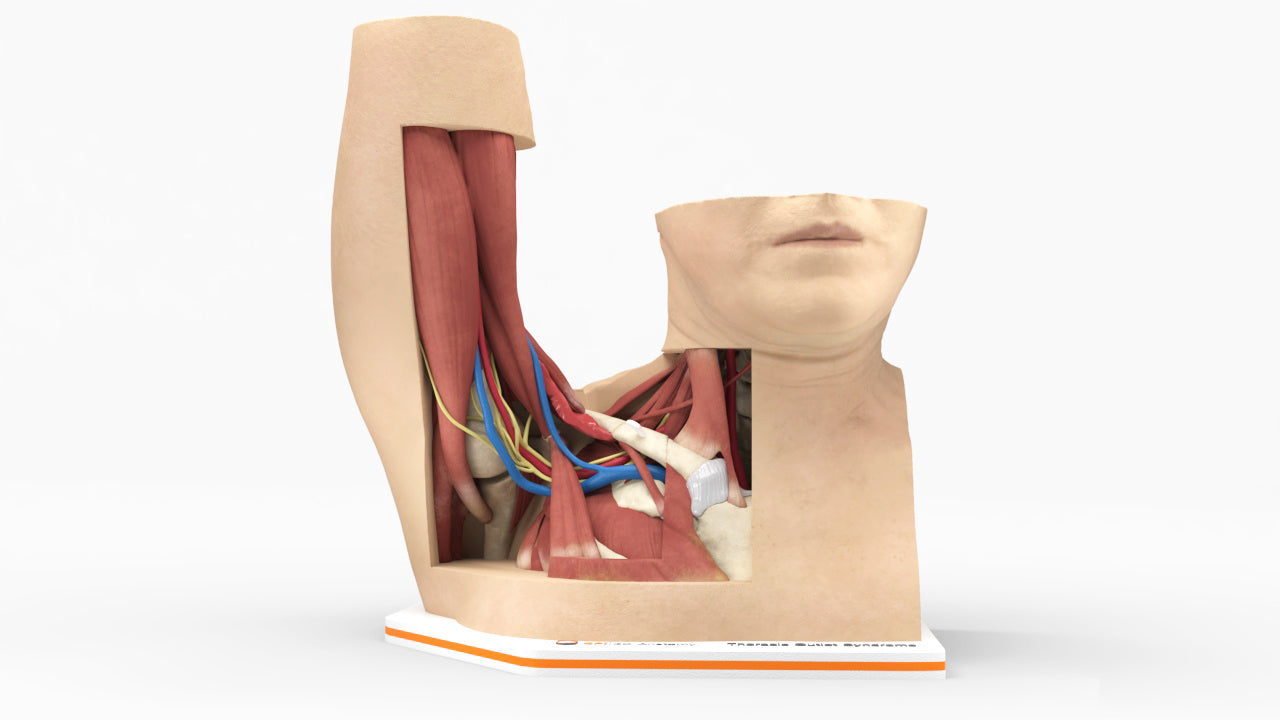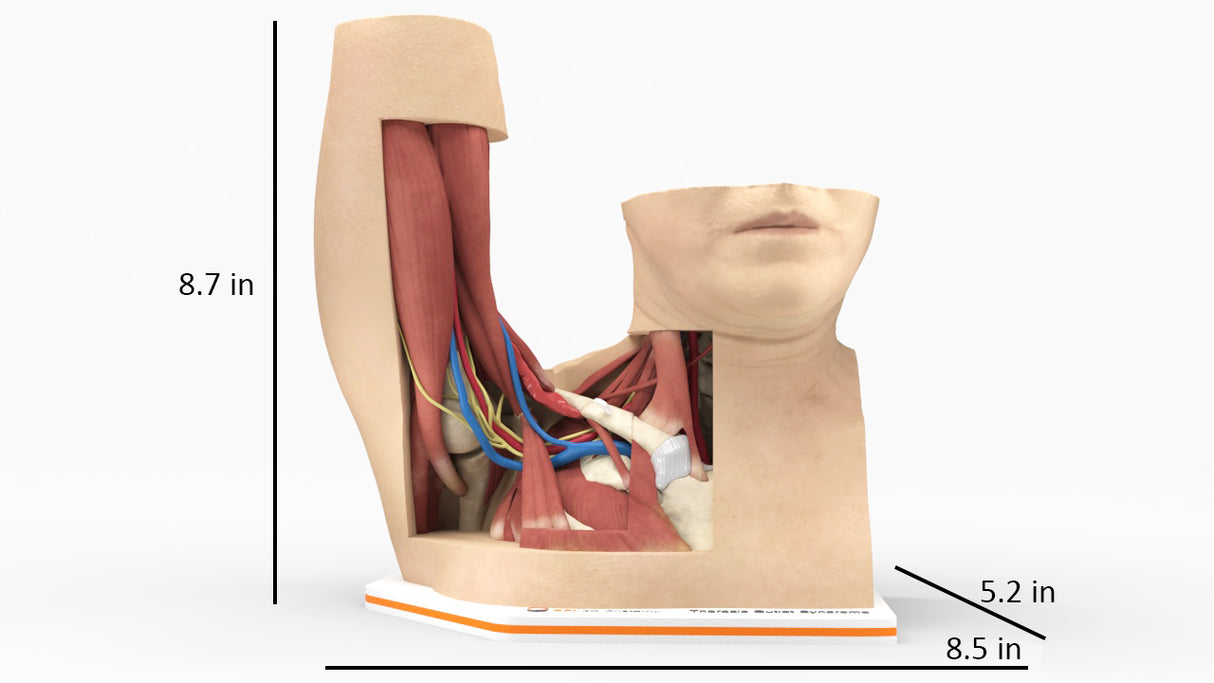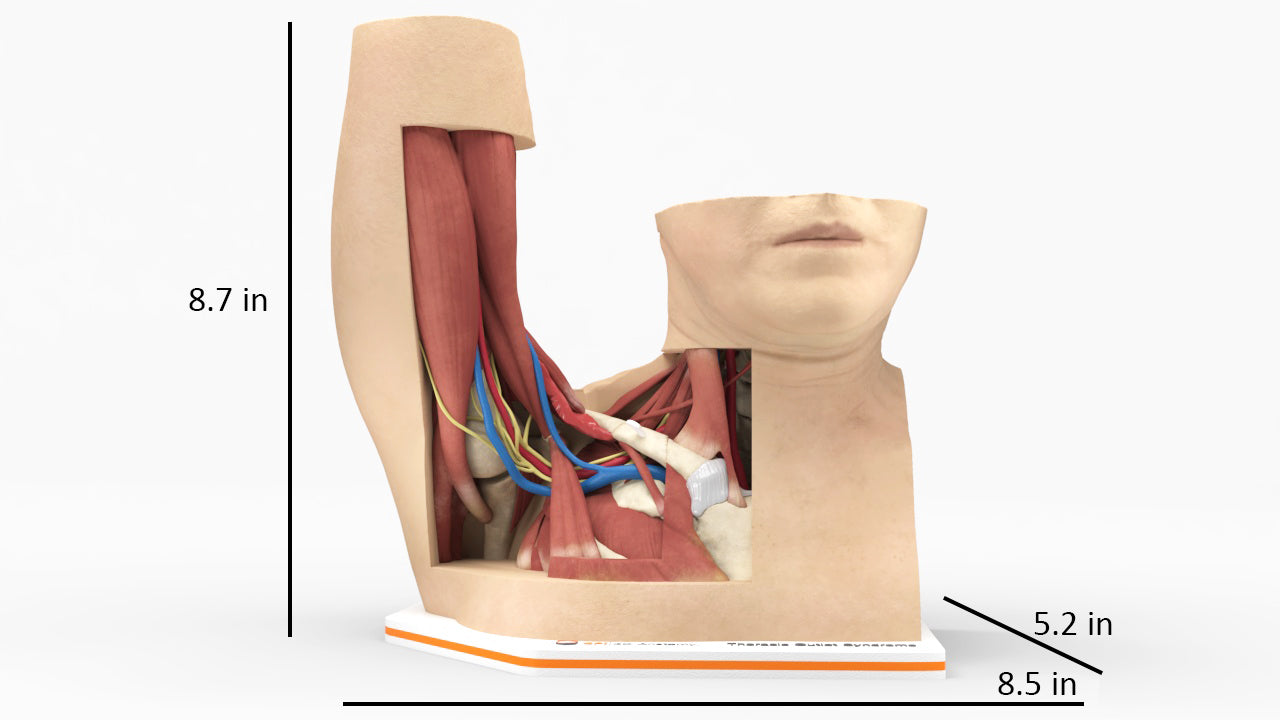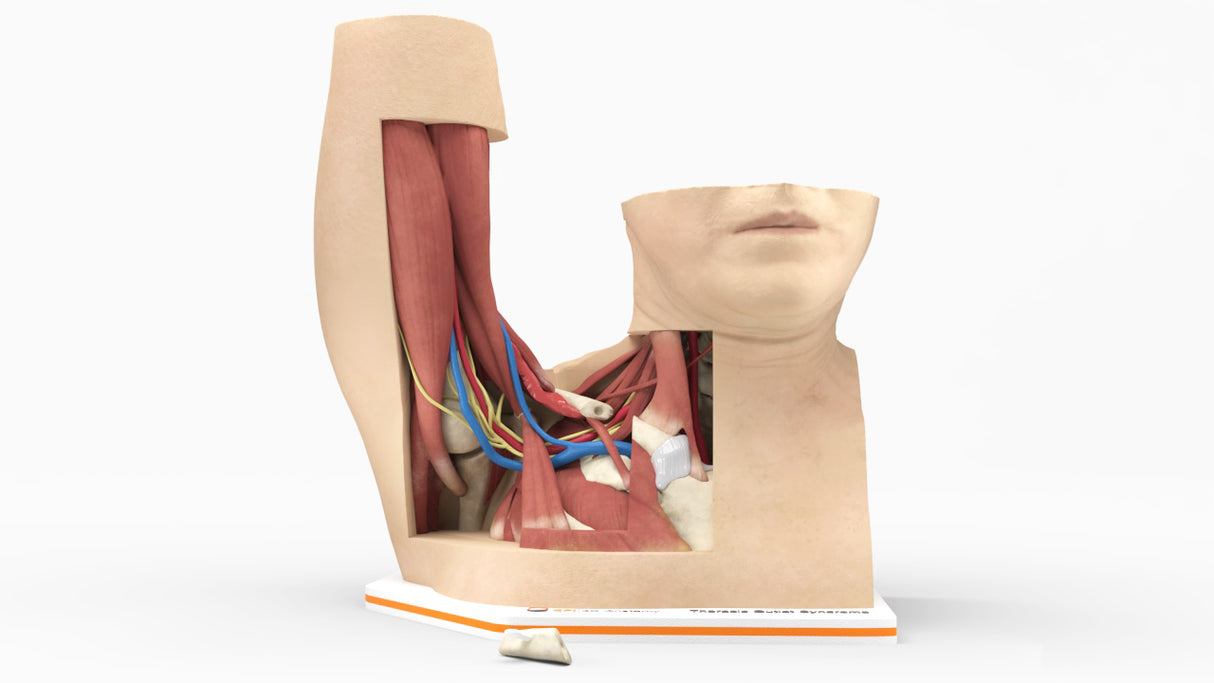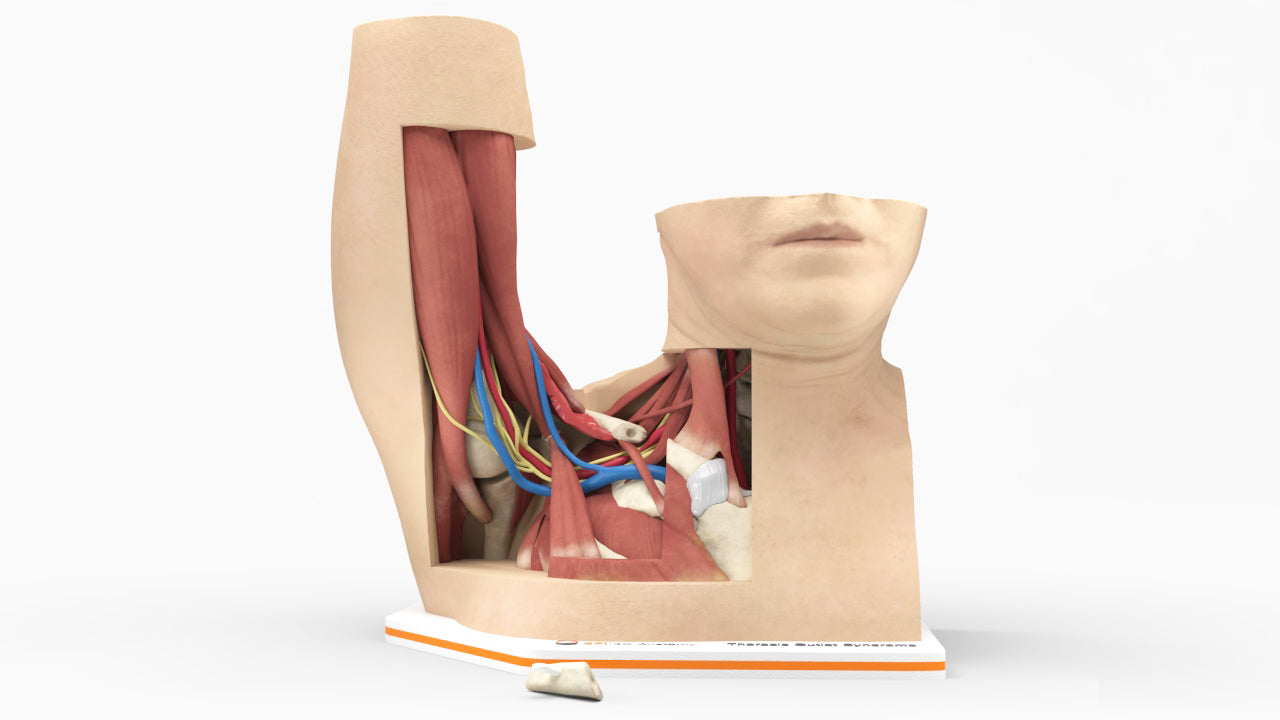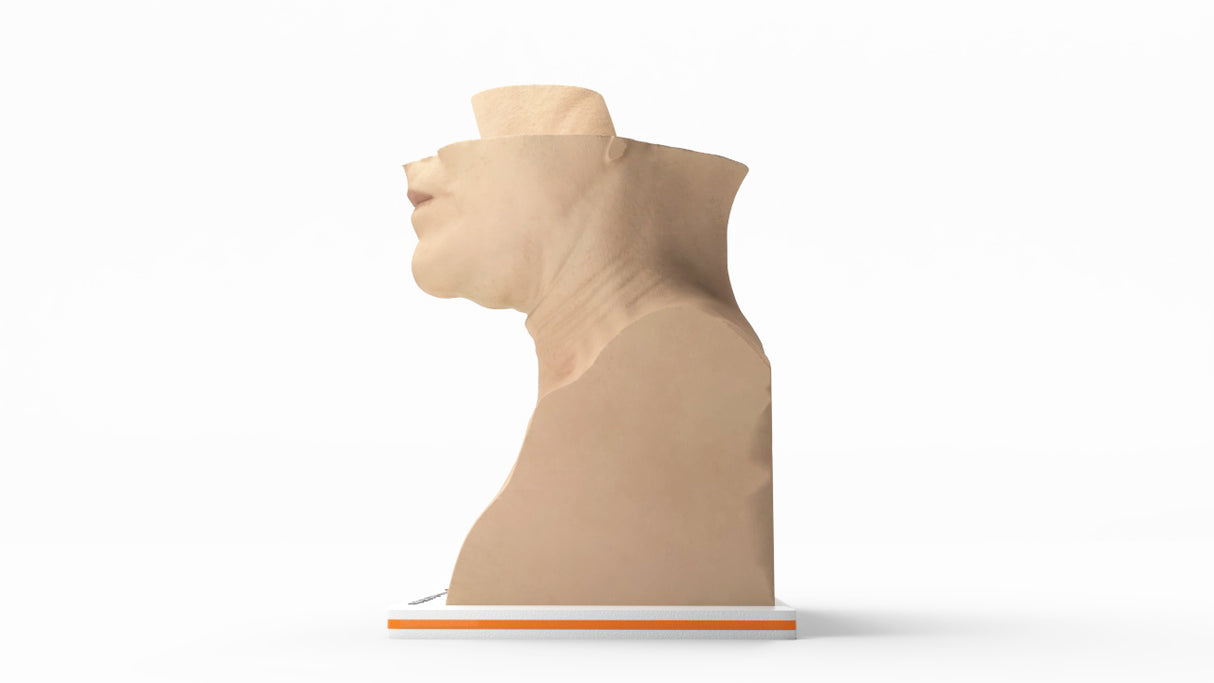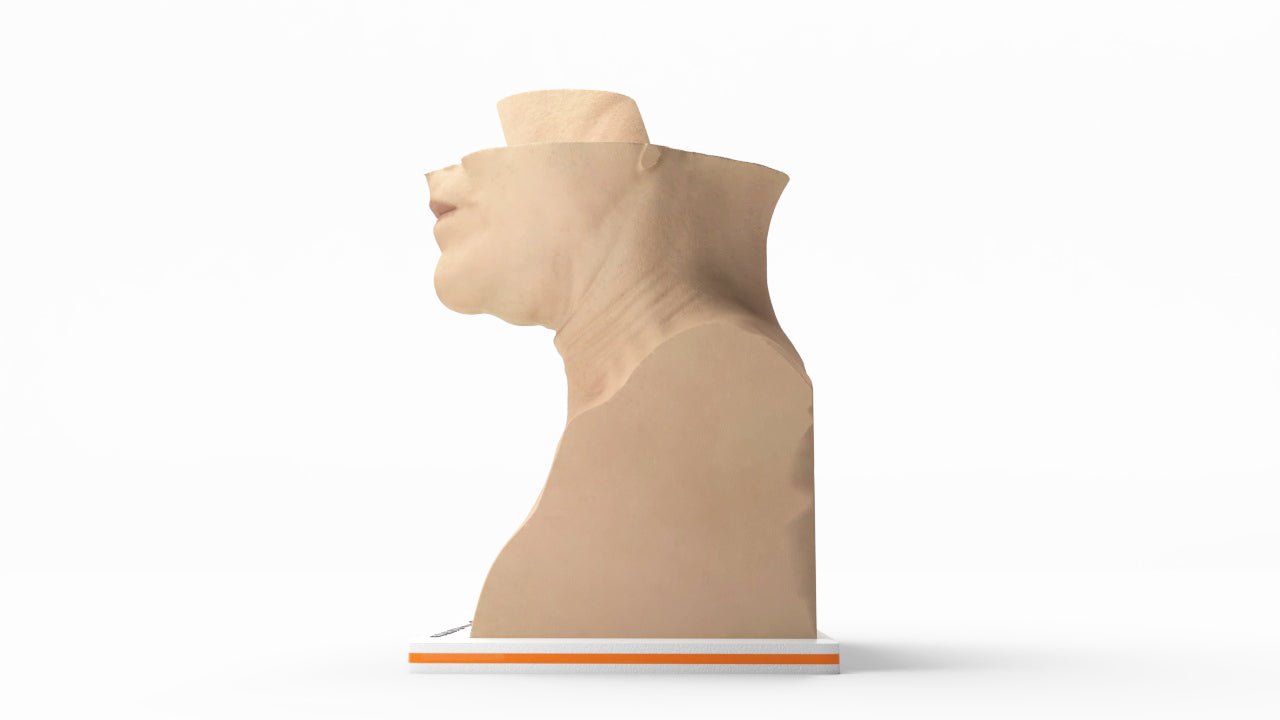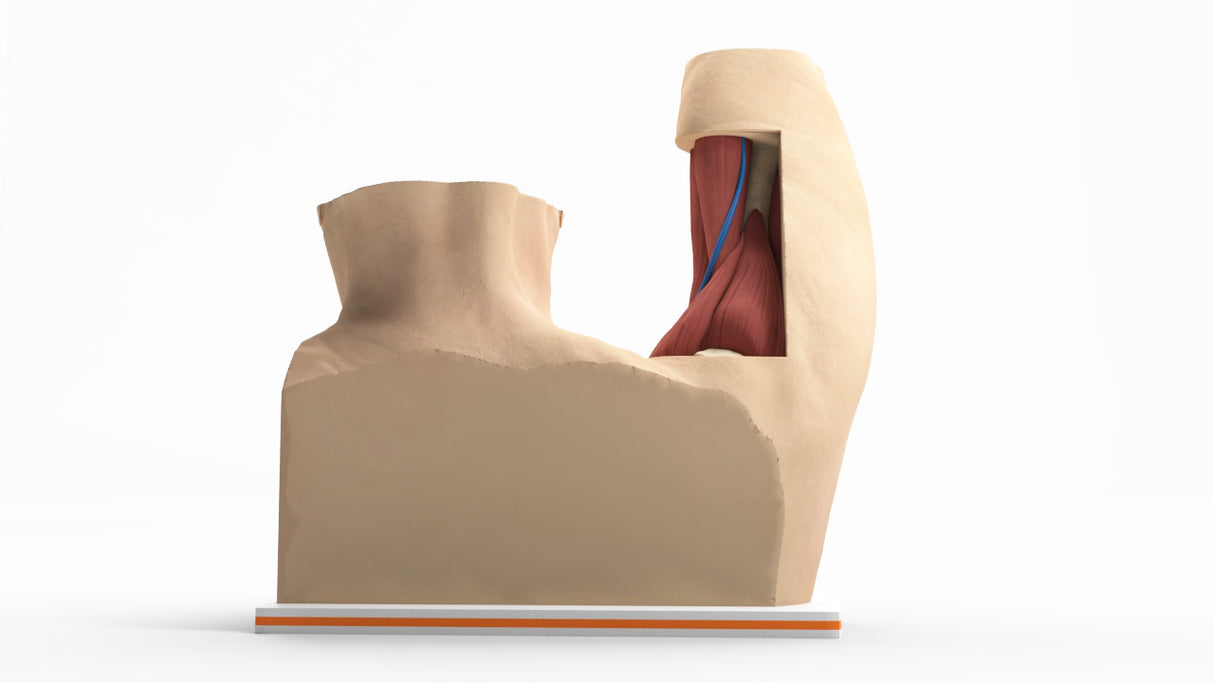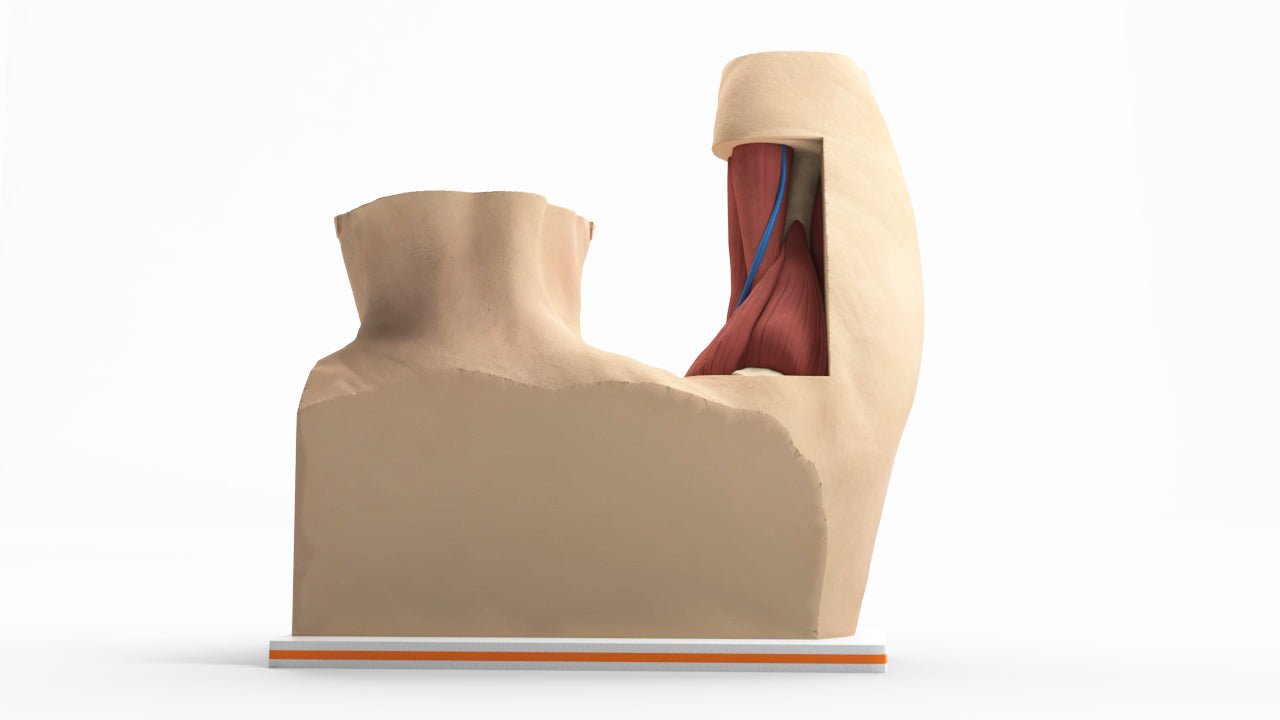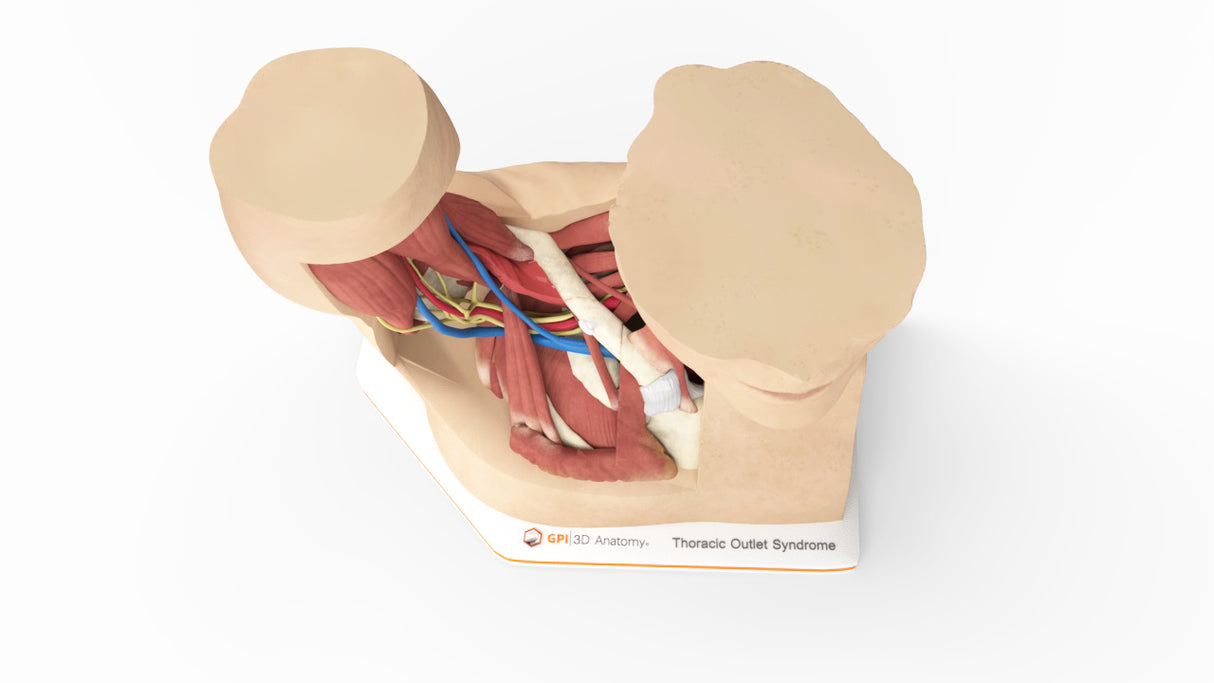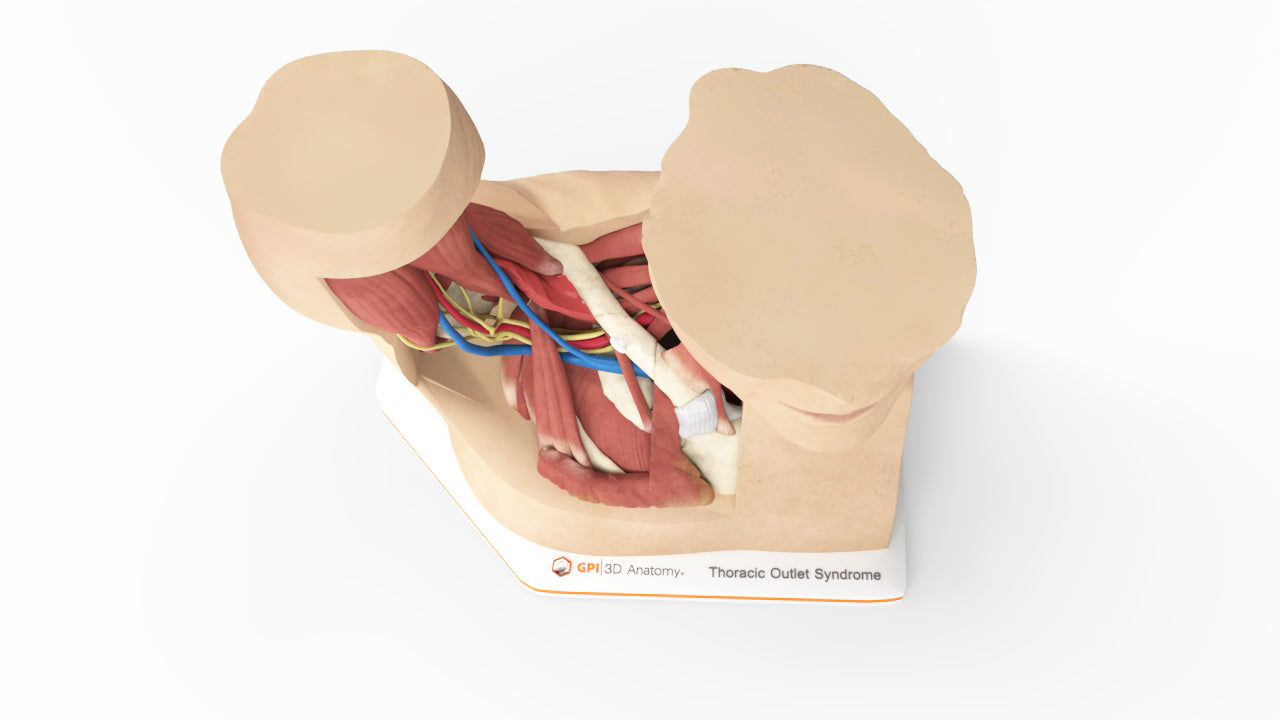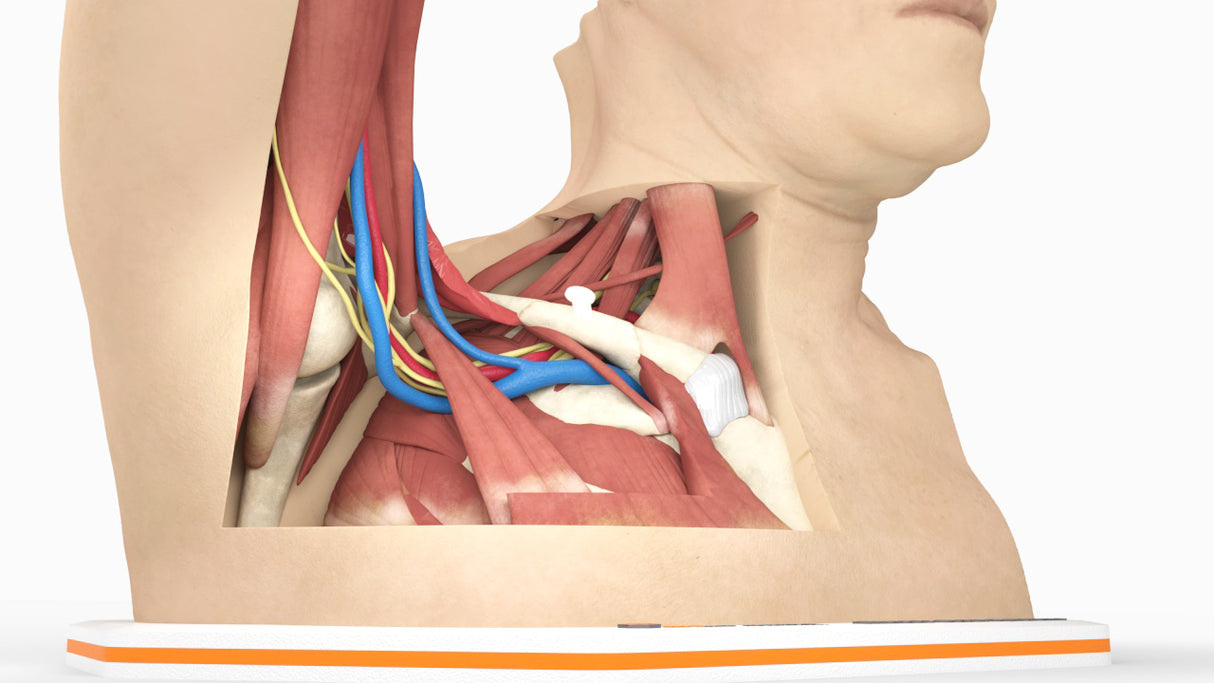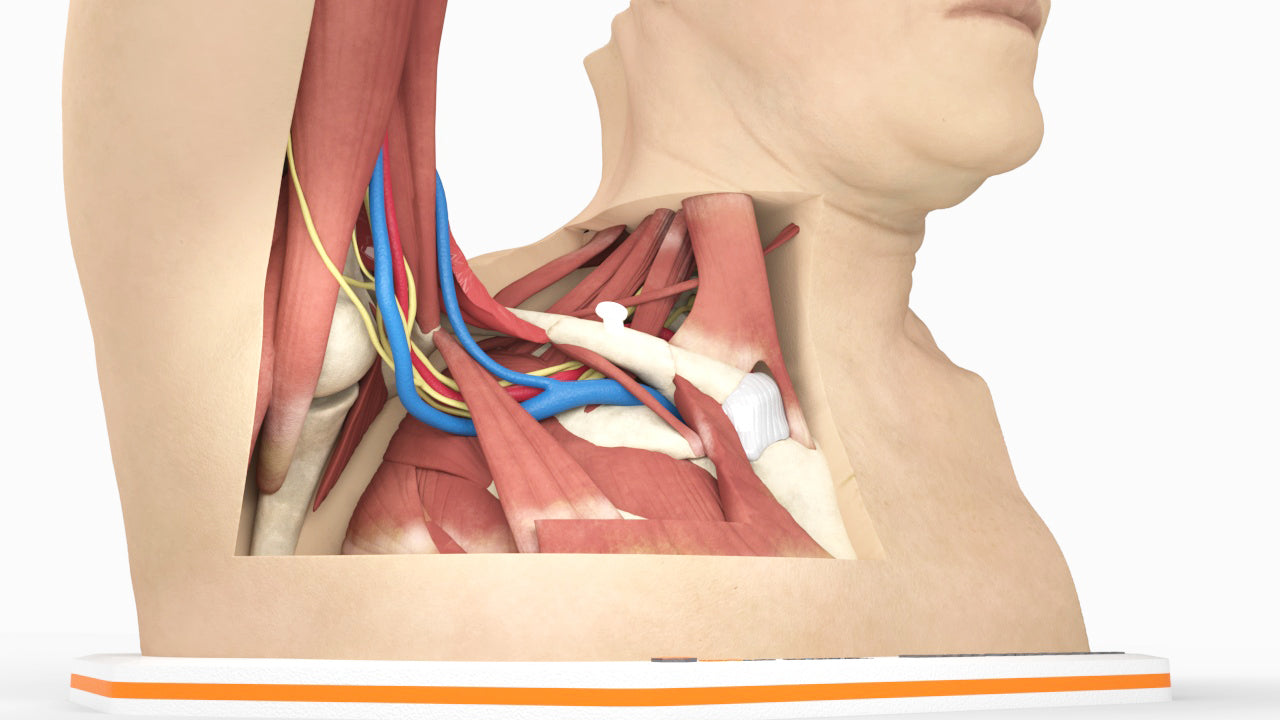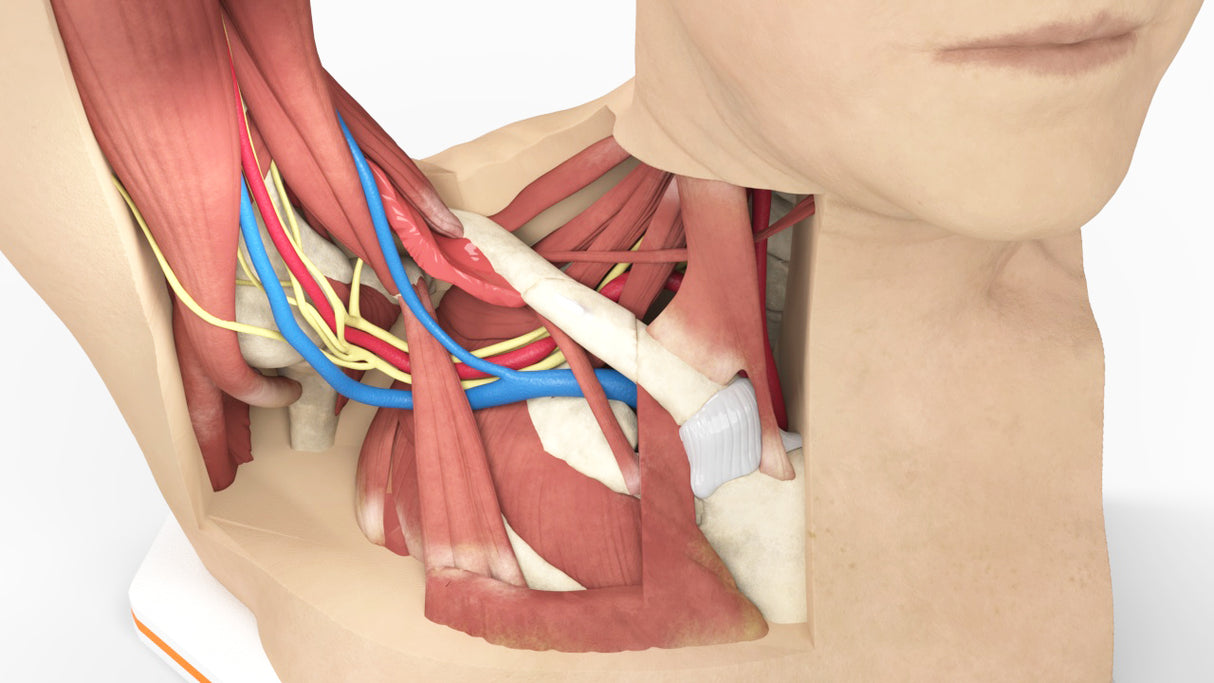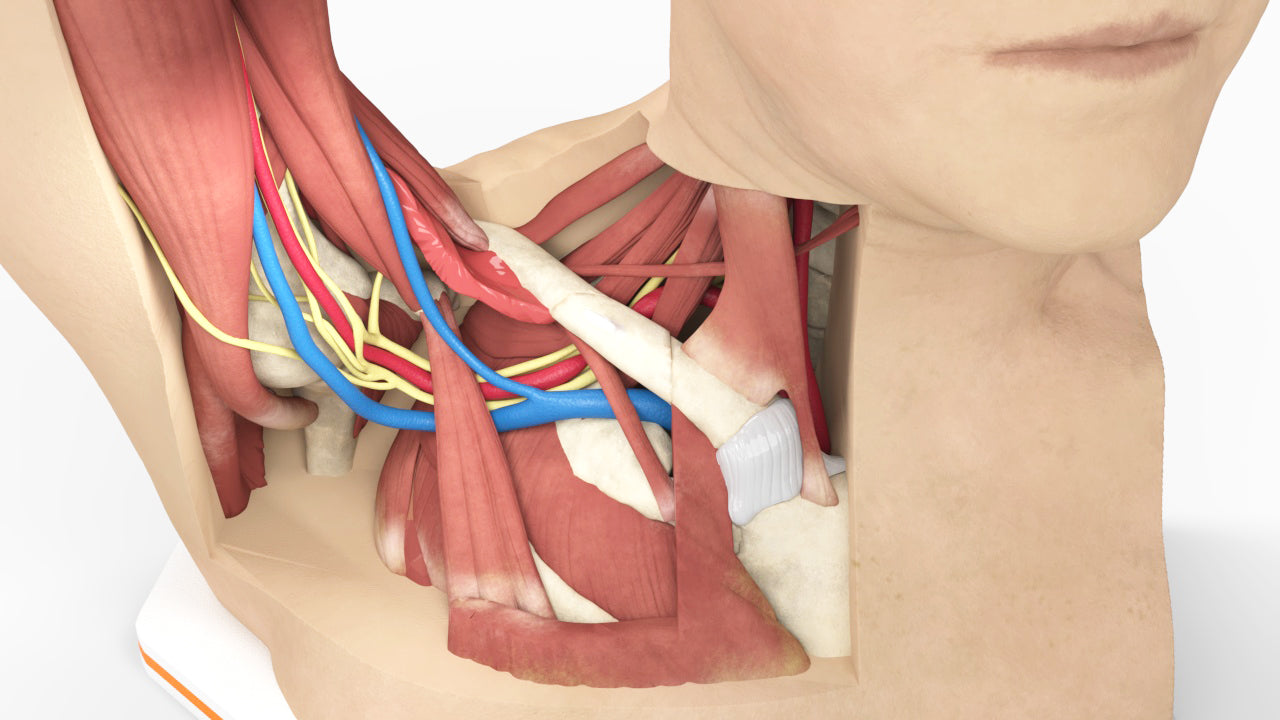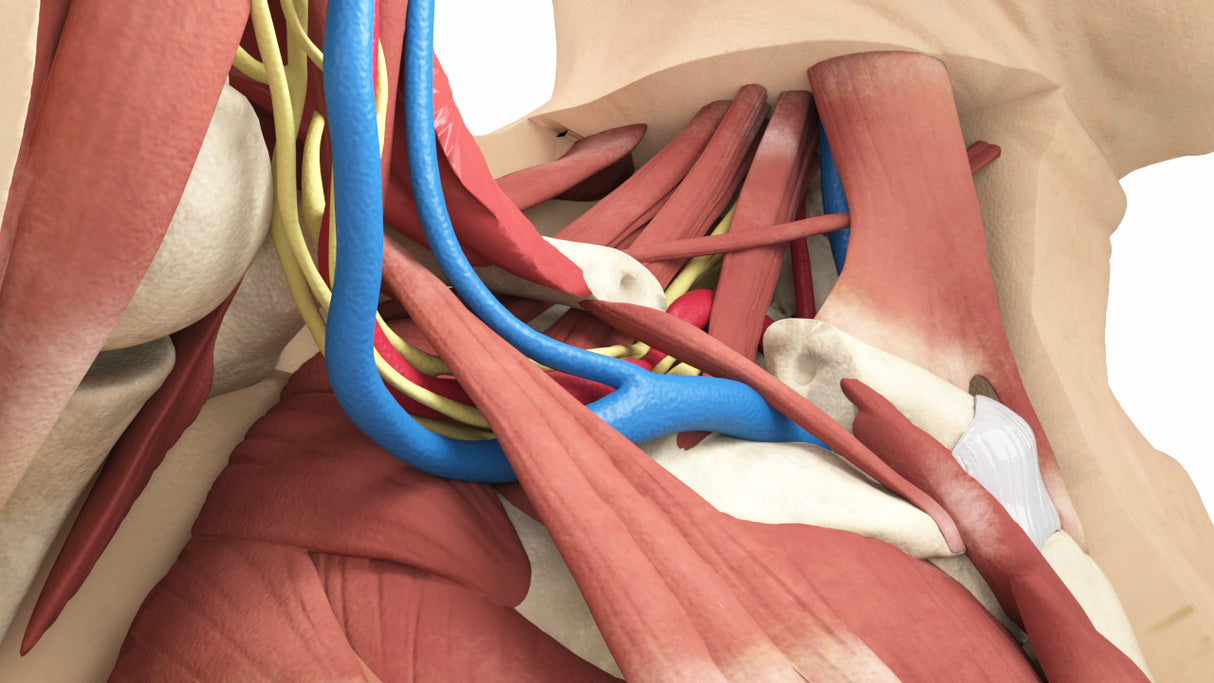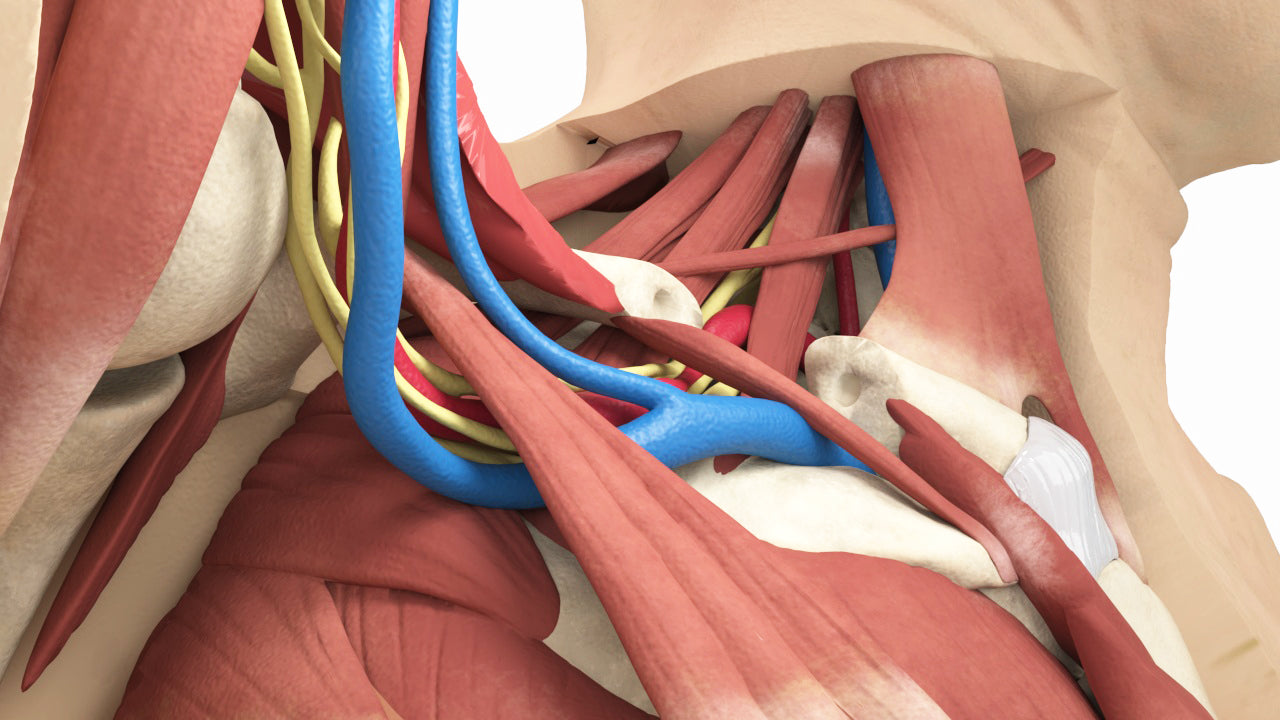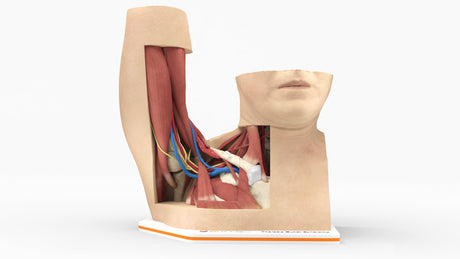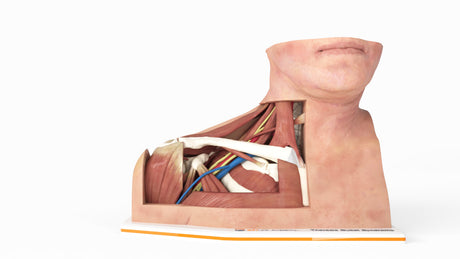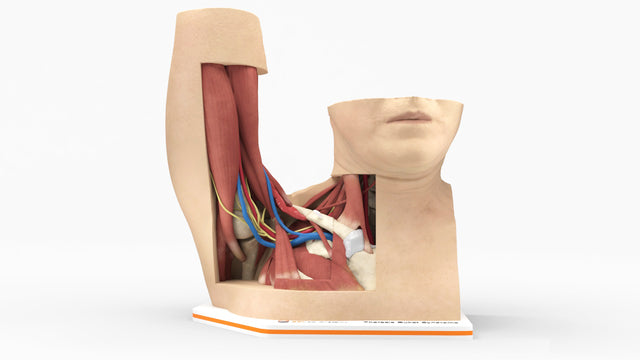Thoracic Outlet Syndrome (TOS), Arm Up
Couldn't load pickup availability
Thoracic outlet syndrome, a nonspecific diagnosis representing many conditions that involve the neurovascular structures that pass through the thoracic outlet. Compression of this area causes a constellation of symptoms, which can include upper extremity pallor, paresthesia, weakness, muscle atrophy, and pain, and manifests when pressure in the thoracic outlet increase to the point of impinging vessels or nerves. Surgical intervention for TOS is indicated for patients who have failed conservative management.
Designed using MRI and CT imaging scans and the latest 3D printing technologies, in collaboration with Mayo Clinic.
Dimensions & Features
About the Condition
Benefits of 3D Printing
3D-printed anatomy models offer a variety of advantages for surgical planning, patient education and medical research, including:
∙ Greater accuracy and detail than traditional anatomical models. 3D-printed models are created from digital scans of a patient's anatomy, which ensures that they are as close as possible to an exact replica of real human anatomy.
∙ More versatility than traditional anatomical models. 3D-printed models can be customized to meet your specific needs, whether planning a complex surgical procedure, training with real patient data or facilitating personalized patient communication.
Not limited to standard manufacturing, 3DP provides the best opportunity to produce accurate models in natural organic shapes, sizes, and colors; creating the best representation of real human anatomy.

